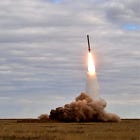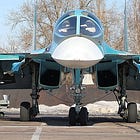According to Ukraine’s President Volodomyr Zelenskyy, Russia launched around 770 ground-launched ballistic missiles and more than 50 9-А-7660 Kinzhal air-launched ballistic missiles against Ukraine from the start of 2025 through 25 October 2025. Russia’s conventionally-armed ballistic missile arsenal is primarily composed of the 9M723 Iskander ground-launched ballistic missiles and North Korean-made KN-23 ballistic missiles, which are operated by the Russian Army. These are complemented by the 9-A-7660 Kinzhal, which is operated by the Russian Air Force. The Oreshnik, a much larger and longer-range ballistic missile design that may or may not be operated by the Russian Army, has to date been employed only once in a November 2024 attack. Russia also employs 300 mm diameter guided artillery rockets with the Russian Army’s BM-30 and Tornado-S launchers. These are short-range and low apogee/maximum altitude ballistic missiles by another name, but Ukraine’s regular disclosures of Russian strike munitions do not include the number of heavy artillery rockets, whether guided or unguided, that Russia employs. Russia is also reported to have received Iranian-made short-range ballistic missiles, but there has been no independent confirmation of Russia’s use of such ballistic missiles to date.
There are 297 days in the time frame for which Russia is said to have launched a total of around 820 9M723 Iskander, 9-A-7660 Kinzhal, and North Korean-made KN-23 ballistic missiles. Supposing that Ukraine’s disclosures are accurate, Russia launched an average of just 2.76 ballistic missiles per day over a 297-day period in 2025. This amounts to a total of 1007 ballistic missiles on an annualized basis. These numbers are, of course, very unimpressive even in a context in which Russian ballistic missile launches against targets far behind the frontline, as opposed to short-notice “dynamic” attacks against fleeting battlefield targets, are decidedly sporadic.
In late 2024, a Ukrainian military intelligence official placed an upper limit on Russia’s annual capacity for Iskander ballistic missile production at 600 units. While production capacity appears to have been increased over the course of 2025 for the Iskander, as with other Russian strike munitions, and notwithstanding the enduring Russian practice of stockpiling strike munitions for use in a crisis or conflict with NATO that may take place during the still active phase of the Russia-Ukraine War, Russia is poorly positioned to undertake even a brief high-intensity strike campaign using ballistic missiles in the manner of China or Iran for the foreseeable future. This will require the capacity to launch at least a hundred or so ballistic missiles per day over the course of multiple days, if not multiple weeks. To undertake such a strike campaign, Russia will need to have a ready-for-use arsenal of at least 1000-2000 ballistic missiles. With Russia seemingly limited to launching a total of around 830 ballistic missiles over a 297-day-long period in 2025 and notwithstanding ongoing stockpiling, Russia appears to be far from being in a position to undertake even a brief high-intensity strike campaign using ballistic missiles.
Should Russia’s annual production output of ballistic missiles in a post-war era be sustained in the region of 600-1000 units, Russia will require several years to put in place a ready-for-use arsenal of 1000-2000 ballistic missiles. Russia’s resources are not unlimited, and the war has taken a major toll on not just the Russian economy but also the finances of the Russian state. A larger Russian ballistic missile arsenal is possible, but it will invariably come with the opportunity cost of forgone resource allocations in other areas. Russia’s ballistic missiles are understood to have had a low penetration rate in the Russia-Ukraine War, which is to say that Ukraine’s air defences are understood to have sustained a high interception rate against Russian ballistic missiles. Ukraine is set to receive additional air defence systems with ballistic missile interception capabilities, and multiple European countries are not only acquiring such systems but also expanding their arsenals of ballistic missile defence-capable surface-to-air missiles. As a result, Russia must significantly expand its arsenal of conventionally-armed short-range ballistic missiles merely to restore its ballistic missile-based strike capabilities to its February 2022 state, let alone greatly expand upon it.
Some relevant posts:






